Key Takeaways
- Personalized cover letters tailored to each job significantly outperform generic templates in grabbing recruiter attention.
- Showcasing unique achievements and aligning with company values makes your application more memorable and impactful.
- Avoiding clichés, using specific examples, and adding a strong call to action increases your chances of landing an interview.
In today’s highly competitive job market, standing out from the crowd has become more crucial than ever.
While your resume may showcase your qualifications and experience, it’s your cover letter that often serves as the first impression to hiring managers and recruiters.
Unfortunately, in an era of convenience and automation, many job seekers rely heavily on pre-made templates, generic formats, and AI-generated paragraphs that sound polished—but lack authenticity and originality.
This widespread use of templated cover letters has created a saturated environment where most applications start to look, sound, and feel exactly the same.

The problem?
Recruiters can spot a template-based cover letter in seconds. From vague opening lines like “I’m writing to express my interest in the position…” to impersonal phrases copied from online examples, these generic submissions do little to distinguish candidates from one another.
Even the most qualified individuals risk being overlooked simply because their cover letters fail to communicate passion, relevance, and personality.
As a result, companies are increasingly seeking candidates who go beyond the script—those who take the time to tailor their application materials to the role, company, and industry in question.
This is where a winning cover letter comes into play.
A thoughtfully crafted, personalized cover letter not only grabs attention but also demonstrates genuine interest, cultural alignment, and a proactive mindset. It tells your story in a way that a resume simply cannot. It showcases your accomplishments with real-world context.
It aligns your personal goals with the company’s mission. And most importantly, it positions you as a memorable candidate in a sea of sameness.
In this blog, we will dive deep into the strategies and techniques that can help you craft a cover letter that rises above the noise.
We will explore why most cover letters fail to make an impact, what hiring managers are truly looking for, and how to construct a letter that highlights your strengths while connecting directly to the needs of the employer.
From storytelling methods to data-backed personalization, we’ll equip you with actionable insights and real examples to ensure your next cover letter not only gets read—but leads to interviews and job offers.
If you’re tired of submitting applications that go unanswered or want to give yourself a competitive edge in your job search, this guide is for you.
Whether you’re applying for your first role, switching careers, or targeting a high-level position, learning how to write a compelling, one-of-a-kind cover letter can make all the difference. Stop blending in with the crowd. It’s time to break free from templates and discover how to write a cover letter that truly gets you hired.
Before we venture further into this article, we would like to share who we are and what we do.
About 9cv9
9cv9 is a business tech startup based in Singapore and Asia, with a strong presence all over the world.
With over nine years of startup and business experience, and being highly involved in connecting with thousands of companies and startups, the 9cv9 team has listed some important learning points in this overview of the Winning Cover Letters.
If your company needs recruitment and headhunting services to hire top-quality employees, you can use 9cv9 headhunting and recruitment services to hire top talents and candidates. Find out more here, or send over an email to [email protected].
Or just post 1 free job posting here at 9cv9 Hiring Portal in under 10 minutes.
Winning Cover Letters: How to Get Hired When Everyone Else Uses Templates
- Why Most Cover Letters Don’t Work Anymore
- The Psychology Behind a Winning Cover Letter
- Key Elements of a Standout Cover Letter
- Step-by-Step Guide to Writing a Winning Cover Letter
- Common Mistakes to Avoid When Writing Your Cover Letter
- Bonus Tips to Make Your Cover Letter Irresistible
1. Why Most Cover Letters Don’t Work Anymore
In an era where hiring managers receive hundreds of job applications for a single position, the traditional approach to cover letters has become ineffective. Despite being one of the most crucial tools in the job search process, most cover letters fail to serve their purpose—to persuade and differentiate the candidate. Below, we explore the critical reasons why most cover letters are overlooked or dismissed, and what modern applicants must do differently to stay competitive.
The Overuse of Generic Templates
1. Lack of Personalization
- Most cover letters use generic greetings like “To whom it may concern” or “Dear Hiring Manager” which create an impersonal first impression.
- Candidates often fail to mention the company’s name, the role applied for, or any personalized reference to the business or its culture.
2. Repetitive and Overused Phrases
- Common phrases like:
- “I am writing to apply for…”
- “I believe I am a great fit for your team…”
- “Please find my resume attached…”
- These are clichés that add no value and often indicate a lack of creativity or real effort.
3. One-Size-Fits-All Format
- Applicants often submit the same letter to multiple jobs with minor tweaks, which is easy for recruiters to identify.
- Template-based letters fail to align with specific job requirements or company values.
Failing to Show Value or Tell a Story
1. Too Focused on Duties, Not Impact
- Many cover letters merely restate the resume or list job responsibilities instead of highlighting measurable achievements.
- Example of ineffective statement:
- “I managed a team of sales associates.”
- Improved version:
- “I led a team of 8 sales associates and increased regional sales revenue by 32% in six months.”
2. No Storytelling or Context
- Generic letters skip over the opportunity to tell a personal success story that illustrates competence, character, or cultural fit.
- Strong storytelling helps the hiring manager visualize the candidate in action and builds an emotional connection.
Tone and Formatting Issues
1. Robotic and Formal Language
- Many candidates adopt an overly formal tone that feels stiff and impersonal, often using passive voice.
- Example: “The enclosed resume is submitted for your consideration.”
- Better: “I’m excited to share how my background in UX design aligns with your mission to improve user-centric experiences.”
2. Poor Visual Structure
- Walls of text with no paragraph breaks or white space make the letter difficult to skim or engage with.
- Lack of formatting signals a lack of attention to detail.
3. Misaligned Tone
- A formal tone in a creative role, or a casual tone in a corporate role, can work against you.
- Understanding the industry tone and mirroring it is crucial.
Overlooking the Recruiter’s Perspective
1. Not Addressing the Company’s Needs
- Most cover letters focus entirely on what the candidate wants (“I am looking for growth…”) rather than what value they can provide.
- Successful letters flip the script to answer:
- “How can I help this company succeed?”
2. No Call-to-Action (CTA)
- Weak closings such as:
- “Thank you for your time and consideration.”
- More compelling CTA:
- “I’d love the opportunity to discuss how my background in data analytics can support your mission to optimize customer acquisition strategies.”
Comparative Table: Template Cover Letter vs. Winning Cover Letter
| Aspect | Template Cover Letter | Winning Cover Letter |
|---|---|---|
| Opening Line | “I’m writing to apply for…” | “As a digital marketer with a passion for data-driven growth, I was thrilled to see your posting…” |
| Personalization | Generic greeting and structure | Customized to the company, role, and industry |
| Value Proposition | Focus on duties and generic skills | Focus on impact, results, and relevance |
| Tone | Overly formal or stiff | Conversational yet professional |
| Format | Dense, unformatted text | Clean structure with clear paragraphs and spacing |
| Call to Action | Passive thanks and vague closing | Proactive and confident call to interview or connect |
| Employer Focus | Me-centric language | Employer-oriented with tailored messaging |
Recruiter Insight: What Makes Them Stop Reading
1. Common Triggers for Skimming or Discarding
- Letters that are too long (more than one page or too wordy)
- Copy-pasted job descriptions with no original input
- No evidence of research about the company or role
- Spelling or grammar mistakes
2. What Makes Them Keep Reading
- A compelling hook in the first sentence
- Specific references to the company’s mission, projects, or leadership
- Metrics or proof of past performance
- Genuine enthusiasm and cultural alignment
Real-World Example
Bad Example (Template):
Dear Hiring Manager,
I am writing to express my interest in the marketing associate position. I have five years of experience in the industry and believe I would be a great fit. Please find my resume attached. Thank you for your time.
Good Example (Customized):
Dear Ms. Alvarez,
As someone who has led digital campaigns that increased conversion rates by over 40%, I was excited to see ABC Agency’s recent expansion into influencer marketing. I’d love the opportunity to bring my data-driven creativity to your innovative team.
Conclusion: Why You Need to Break Away from the Mold
- In a job market where competition is fierce and attention spans are short, template cover letters simply don’t cut it.
- Recruiters crave authenticity, relevance, and energy—qualities that templated content rarely delivers.
- By understanding why most cover letters fail, you can avoid common pitfalls and start crafting application materials that open doors.
2. The Psychology Behind a Winning Cover Letter
In the hiring process, decision-making is not purely logical—it’s deeply influenced by psychological triggers. A winning cover letter leverages human psychology to capture attention, build connection, and inspire action. Understanding the mental models and emotional responses of recruiters allows candidates to craft compelling messages that stand out in crowded inboxes. This section unpacks the psychological principles that separate forgettable cover letters from unforgettable ones.
The Power of First Impressions
1. Primacy Effect: First Sentences Set the Tone
- The primacy effect explains why people remember the first items they see or read.
- A powerful opening line instantly signals confidence and relevance.
- Instead of opening with “I am writing to apply…”, try:
- “When I helped boost online engagement by 200% at XYZ Corp, I discovered how storytelling drives brand loyalty.”
2. Visual Appeal Triggers Engagement
- Clean formatting, white space, and well-organized paragraphs reduce cognitive load and encourage reading.
- A visually appealing cover letter increases the likelihood that a recruiter will read past the first paragraph.
3. Emotional Tone Matters
- Recruiters respond positively to genuine enthusiasm and emotional intelligence.
- Tone should balance professionalism with a human voice, showing both competence and character.
Social Proof and Credibility Cues
1. Demonstrating Proven Success Builds Trust
- Referencing quantifiable results or notable collaborations lends immediate credibility.
- Example:
- “While working with Fortune 500 clients at ABC Agency, I led a rebranding campaign that grew market share by 18%.”
2. Referencing Common Ground Enhances Likeability
- Mentioning a mutual interest, industry leader, or company initiative can build rapport.
- Example:
- “I was inspired by your recent sustainability report and share your commitment to environmental innovation.”
3. Testimonials or Referrals Activate the Bandwagon Effect
- Mentioning a referral from a current employee or shared connection triggers social validation.
- “Jane Smith from your marketing team recommended I apply for this role after we collaborated on a regional campaign.”
Cognitive Biases That Influence Recruiter Decisions
1. The Halo Effect
- Highlighting one strong success or high-profile achievement can cast a “halo” across the entire application.
- Example:
- “As a keynote speaker at the 2023 UX Global Summit, I shared insights on user-centered design that later influenced three product launches.”
- Example:
2. Confirmation Bias
- Recruiters often look for evidence that confirms their first impression.
- Aligning your language with the job description reinforces that you are the right fit.
- Mirror keywords and values such as:
- “Data-driven decision-making”
- “Customer-centric innovation”
- “Agile project management”
- Mirror keywords and values such as:
3. Anchoring Effect
- Placing a powerful achievement early in the letter sets a mental benchmark for the rest of the content.
- Example:
- “At my last position, I increased email open rates by 55% in 60 days—results I’m excited to replicate for your CRM strategy.”
- Example:
Emotional Triggers That Drive Engagement
1. Curiosity and Open Loops
- Posing a question or previewing a story can hook the reader.
- Example:
- “What happens when a nonprofit triples its donor base in under six months? I found out firsthand at HopeAid.”
- Example:
2. Reciprocity Principle
- Offering value or insight before asking for an interview activates a reciprocal response.
- Example:
- “Here are three micro-influencer tactics I used that could support your current social strategy.”
- Example:
3. Future-Pacing the Reader
- Help the recruiter visualize the candidate’s success in the role.
- Example:
- “I’m excited about the possibility of leading your upcoming digital transformation and ensuring it aligns with both user expectations and business goals.”
- Example:
Psychological Table: Key Triggers and Their Effects
| Psychological Trigger | What It Does | How to Apply It in Your Cover Letter |
|---|---|---|
| Primacy Effect | Creates a lasting first impression | Start with a high-impact achievement or powerful personal hook |
| Halo Effect | Makes a single success elevate overall perception | Mention a standout result or award early in the letter |
| Social Proof | Builds trust through validation by others | Reference past clients, teams, referrals, or notable collaborations |
| Emotional Tone | Builds connection and authenticity | Write with warmth, clarity, and genuine interest |
| Reciprocity | Encourages return engagement | Offer ideas or value before asking for a response |
| Future Pacing | Helps recruiter visualize working with you | Describe potential contributions in terms of the company’s goals |
| Curiosity/Hook | Captures attention and entices further reading | Open with a story, question, or surprising result |
| Confirmation Bias | Reinforces fit with role by reflecting desired traits | Align your wording with the job post and company language |
| Anchoring Effect | Sets a performance benchmark early | Share a major result in the opening paragraph |
Real-World Examples of Psychology at Work in Cover Letters
Example 1: Emotional Tone + Future Pacing
“Your mission to democratize finance resonates with my personal journey as a first-generation college graduate. I’d be excited to bring my data science skills to help empower more communities through your mobile platform.”
- Psychology Activated: Emotional resonance, future pacing, mission alignment
Example 2: Social Proof + Anchoring Effect
“At XYZ Tech, I led a product team that launched a SaaS solution now used by over 12,000 SMBs. I look forward to bringing that same innovation to your user onboarding experience.”
- Psychology Activated: Halo effect, trust building, anchoring with quantifiable success
Understanding the Recruiter’s Psychological Journey
| Recruiter’s Mindset Stage | What They’re Thinking | What Your Cover Letter Should Do |
|---|---|---|
| Initial Glance | “Is this worth my time?” | Grab attention with a bold, relevant hook |
| Mid-Scan | “Does this person get us?” | Show alignment with mission, tone, and values |
| Deeper Read | “Can they deliver results?” | Offer examples of quantifiable achievements and problem-solving skills |
| Final Impression | “Do I want to talk to this person?” | End with a strong CTA and enthusiasm for a deeper conversation |
Conclusion: Psychology Is Your Secret Weapon
- A winning cover letter is not just a document—it’s a psychological engagement tool.
- By incorporating key principles such as emotional connection, cognitive bias awareness, and social proof, job seekers can dramatically increase their chances of standing out.
- Understanding what motivates recruiters and structuring the letter around those triggers is the key to turning an ordinary application into a compelling invitation for an interview.
3. Key Elements of a Standout Cover Letter
Crafting a standout cover letter requires more than just filling in a template with generic language. In today’s competitive job market, your cover letter must immediately grab the attention of hiring managers, showcase your value proposition, and communicate a genuine interest in the company and the role. This section breaks down the key components that distinguish an exceptional cover letter from the ordinary ones.
1. Customized Header with Contact Information
- Your header should mirror your resume’s for a cohesive application.
- Include your full name, phone number, email address, LinkedIn profile, and the date.
- Add the employer’s name, title, company, and address beneath your information.
Example:
John Anderson
[email protected] | (123) 456-7890 | linkedin.com/in/johnanderson
May 19, 2025
Hiring Manager
ABC Tech Solutions
123 Main Street
New York, NY 10001
2. A Personalized Greeting
- Avoid generic greetings like “To whom it may concern.”
- Address the letter to the specific hiring manager using their full name.
- If the name is unknown, use a title like “Dear Hiring Manager” or “Dear Marketing Team.”
Tip:
Use LinkedIn or the company website to find the correct contact person.
3. A Compelling Opening Paragraph
- Begin with a strong hook that captures interest in the first line.
- State the position you’re applying for and where you found it.
- Mention one major accomplishment or unique quality that makes you stand out.
Example Opening:
“As a digital marketing specialist who drove a 65% increase in organic traffic for a B2B SaaS brand, I was excited to discover your opening for a Senior Content Manager at XYZ Corp.”
4. Strong Value Proposition in the Body Paragraphs
- Focus on what you can offer, not just what you’ve done.
- Connect your skills, experiences, and achievements directly to the job description.
- Use quantifiable metrics to validate your claims (e.g., “increased sales by 32%”).
Sample Structure:
- Paragraph 1: Your background and relevance to the job.
- Paragraph 2: Highlight 2–3 key achievements and how they apply to the new role.
- Paragraph 3: Show alignment with the company’s mission and culture.
5. Use of Action-Oriented and Industry-Specific Language
- Choose strong verbs like “led,” “initiated,” “designed,” and “implemented.”
- Incorporate keywords from the job description for ATS optimization.
Example Comparison:
| Weak Language | Strong, Action-Based Language |
|---|---|
| I was part of a project | I led a cross-functional team project |
| Helped with marketing campaigns | Executed multi-channel marketing strategies |
| Responsible for generating leads | Achieved 120% of lead generation targets |
6. Tailored Skills and Experience Matching the Job Requirements
- Create a mini table or bulleted section comparing job requirements with your qualifications.
- This makes it easier for hiring managers to quickly assess fit.
Example:
| Job Requirement | My Matching Experience |
|---|---|
| 3+ years in content strategy | 4 years leading content at a fintech startup |
| SEO knowledge | Optimized 120+ articles, increasing traffic by 65% |
| Team collaboration | Managed a remote content team across 3 time zones |
7. Cultural Alignment and Enthusiasm for the Company
- Show that you’ve researched the company’s values, goals, or recent projects.
- Express genuine enthusiasm about the opportunity and how you can contribute.
Example Line:
“I’m particularly drawn to your company’s focus on sustainability and innovation, values I share and have embedded into past projects, including a CSR content series that reached 100K readers.”
8. Concise and Persuasive Closing Paragraph
- Reiterate your interest and summarize your value in one sentence.
- Politely request an interview or next step.
- Thank the reader for their time and consideration.
Sample Closing:
“I would welcome the opportunity to bring my digital strategy expertise to ABC Inc., and I look forward to the chance to discuss how I can contribute to your growing team. Thank you for considering my application.”
9. Professional Sign-Off
- Use a formal closing like “Sincerely,” “Best regards,” or “Kind regards.”
- Include your full name and optionally your LinkedIn or digital portfolio.
Example:
Sincerely,
John Anderson
linkedin.com/in/johnanderson
Summary Table: Key Cover Letter Elements Checklist
| Element | Description | Optimisation Tip |
|---|---|---|
| Header | Your contact details and date + employer’s info | Match formatting with your resume |
| Greeting | Address hiring manager by name | Research the recipient’s name |
| Opening Paragraph | Hook + position applied for + why you’re a fit | Lead with impact |
| Body Paragraphs | Showcase achievements and relevant skills | Quantify results and tailor to job description |
| Industry-Specific Language | Use action verbs and job-related terminology | Helps with ATS and credibility |
| Experience vs. Job Requirements | Directly align your skills with employer needs | Use tables or bullet points for clarity |
| Cultural Alignment | Express understanding and enthusiasm for the company | Reference mission, values, or recent company news |
| Closing Paragraph | Summarize interest and ask for interview | Be respectful and confident |
| Sign-Off | Professional farewell with name and optionally a link | Include contact details when necessary |
Final Thoughts
A standout cover letter doesn’t need to be lengthy—it needs to be purposeful, personal, and persuasive. Each section should serve a clear function, guiding the reader from introduction to interest, value, and intent. By incorporating these essential elements and formatting strategically, your cover letter will rise above the generic templates that flood most recruiters’ inboxes.
When done right, your cover letter becomes a strategic tool that not only complements your resume but positions you as the ideal candidate even before the interview begins.
4. Step-by-Step Guide to Writing a Winning Cover Letter
Crafting a winning cover letter is both an art and a strategic exercise. Unlike generic, templated cover letters that fail to connect, a tailored and compelling one aligns closely with the employer’s expectations, demonstrates value, and showcases your personality. This comprehensive step-by-step guide outlines exactly how to write a cover letter that stands out from the competition and resonates with hiring managers.
Step 1: Understand the Job and the Company
1. Research the Job Description
- Identify keywords, responsibilities, and required qualifications.
- Understand the tone of the posting (formal, casual, innovative, etc.).
2. Learn About the Company
- Explore:
- Company website and “About Us” page
- Recent news articles and press releases
- LinkedIn company page
- Identify:
- Mission, values, and culture
- Key products or services
- Notable achievements or expansion plans
3. Analyze the Hiring Manager’s Priorities
- Tailor the letter to align with:
- What problems the role is meant to solve
- What success in the role looks like
Example:
If the company is launching a new digital product, you might emphasize your experience leading tech rollouts or MVP development.
Step 2: Create a Compelling Header
1. Include Key Contact Information
- Your full name, professional email, phone number, and LinkedIn profile
- The date of application
- The hiring manager’s name, job title, company name, and address
2. Address the Letter to a Specific Person
- Use “Dear [Hiring Manager’s Name]” whenever possible.
- If unknown, alternatives include:
- “Dear [Department] Team”
- “Dear Hiring Committee”
Pro Tip: Avoid using “To Whom It May Concern” which feels impersonal.
Step 3: Write an Attention-Grabbing Opening Paragraph
1. Start with a Hook
- Use a compelling story, achievement, or statement that relates directly to the job.
- Avoid starting with generic phrases like:
- “I am writing to apply for…”
2. Introduce Yourself with Value
- Briefly state:
- Who you are
- Your current role or background
- One powerful accomplishment that sets the tone
Example:
“As a content strategist who increased organic traffic by 240% in under a year, I’m excited by the opportunity to bring growth-oriented storytelling to your brand’s next chapter.”
Step 4: Customize the Body with Specific Value Propositions
1. Align Skills with the Role
- Use bullet points or short paragraphs to match your skills to the job’s core needs.
- Provide quantifiable examples whenever possible.
2. Highlight Achievements with Metrics
- Metrics build trust and illustrate your capabilities:
- “Reduced onboarding time by 30%”
- “Increased team productivity by 45% over two quarters”
3. Demonstrate Cultural and Strategic Fit
- Explain why the company’s goals or culture align with your experience or values.
Step 5: Add a Strong Closing Paragraph
1. Reinforce Interest and Fit
- Reiterate enthusiasm and summarize your key strengths.
2. Include a Clear Call to Action (CTA)
- Invite the recruiter to initiate next steps:
- “I would welcome the opportunity to discuss how my experience can contribute to your team’s success.”
3. Express Gratitude
- Thank the reader for their time and consideration.
Example Closing:
“I look forward to the possibility of speaking further about how my data-driven approach to UX design can elevate your digital platforms. Thank you for considering my application.”
Step 6: Format Professionally for Readability
1. Use a Clean, Consistent Layout
- Recommended structure:
- 1-inch margins
- Single spacing
- 3–4 short paragraphs
- Professional font (e.g., Arial, Calibri, Times New Roman, 11–12 pt)
2. Save and Send in the Right Format
- Save as a PDF to preserve formatting
- Use a professional filename:
- “FirstName_LastName_CoverLetter.pdf”
Step 7: Proofread and Final Check
1. Check for Errors
- Use grammar tools (e.g., Grammarly) and read the letter aloud.
- Look for:
- Typos
- Passive voice
- Inconsistent tone
2. Ensure Consistency with Resume
- Make sure:
- Dates, job titles, and achievements align
- Tone and branding match
Useful Chart: Cover Letter Structure Overview
| Section | Purpose | Tips |
|---|---|---|
| Header | Provide contact and company details | Make it easy to identify and personalize |
| Greeting | Address the recipient professionally | Use a name if possible |
| Introduction | Capture attention and introduce your unique value | Hook with a result or relevant story |
| Body | Match experience to job needs with examples | Use data-driven achievements |
| Closing | Summarize fit and express interest | Include a CTA and thank you note |
| Signature | End with full name and optional contact line | Use a formal sign-off like “Sincerely” or “Best regards” |
Cover Letter Template with Notes
| Section | Template Example | Notes |
|---|---|---|
| Header | John Doe [email protected] (123) 456-7890 LinkedIn.com/in/johndoe | Include contact information at top |
| Greeting | Dear [Hiring Manager’s Name], | Personalize whenever possible |
| Introduction | “As a seasoned digital marketer who scaled a $5K ad spend into $200K revenue, I bring ROI-focused strategies.” | Strong hook with quantifiable result |
| Body | “In my role at ABC, I launched SEO campaigns that increased site traffic by 120%…” | Align specific achievements to the role |
| Closing | “I’d love to contribute to your next marketing breakthrough. Thank you for your consideration.” | Shows enthusiasm and ends professionally |
Final Checklist: Before You Submit
| Task | Status |
|---|---|
| Personalized the greeting | ✅ |
| Tailored content to match job description | ✅ |
| Included measurable achievements | ✅ |
| Proofread for typos and grammar | ✅ |
| Saved and named file appropriately | ✅ |
| Matched tone with company brand | ✅ |
Conclusion: From Structure to Strategy
By following this detailed step-by-step guide, job seekers can transform a standard, uninspiring cover letter into a powerful, personalized tool that makes a lasting impression. Each section should not only inform but also persuade—guiding the reader through a narrative of impact, alignment, and opportunity. In a competitive market where first impressions matter, a strategically written cover letter can be the key that unlocks the next opportunity.
5. Common Mistakes to Avoid When Writing Your Cover Letter
A well-crafted cover letter can significantly enhance your chances of landing an interview, but even minor missteps can sabotage your application. Hiring managers often reject cover letters for reasons that are entirely avoidable. From poor formatting and generic content to irrelevant information and weak openings, these errors can signal a lack of professionalism or effort.
This section outlines the most common cover letter mistakes to avoid and provides practical strategies to help candidates present a polished and impactful application.
Using a Generic or Templated Cover Letter
1. Lack of Personalization
- Sending the same cover letter to multiple jobs:
- Signals laziness or disinterest.
- Misses the opportunity to align with specific employer values or needs.
- Fails to mention the company name or job title.
Example Mistake:
“I am applying for a job at your company.” (Too vague; no reference to the specific role or organization)
2. Copy-Pasting From Online Templates
- Hiring managers can instantly recognize overused templates.
- Generic templates lack originality and personality.
Better Alternative:
Write a custom letter tailored to the job description and infused with your authentic tone and experience.
Failing to Address the Hiring Manager Properly
1. Using Outdated Salutations
- Phrases like:
- “To Whom It May Concern”
- “Dear Sir/Madam”
- These feel impersonal and outdated.
2. Not Doing Research
- Failing to find the name of the hiring manager when it is publicly available.
Pro Tip:
Check the company website, job listing, or LinkedIn to find the appropriate contact name.
| Mistake | Why It Fails | Recommended Fix |
|---|---|---|
| “Dear Sir or Madam” | Outdated and gender-specific | Use “Dear Hiring Manager” or actual name |
| No greeting at all | Feels abrupt and careless | Always include a professional salutation |
Focusing Too Much on Yourself, Not the Employer
1. Self-Centered Language
- Overuse of “I,” “me,” or “my” instead of focusing on how you can help the company.
2. Ignoring Employer Needs
- Neglecting to mention how your skills can solve the company’s challenges.
Example Mistake:
“I am looking for a position where I can grow.”
(Instead, emphasize how you can help the company grow.)
Better Alternative:
“With my background in customer success, I can help reduce churn and improve retention metrics for your SaaS platform.”
Repeating Your Resume Without Adding Value
1. Duplicating Bullet Points
- Cover letters should not simply repeat resume content.
- They should contextualize accomplishments and demonstrate motivation.
2. Missing the Opportunity for Storytelling
- Fails to connect experiences to how they will translate into success in the role.
Better Approach:
Use the letter to explain:
- Why you applied
- What you bring beyond job descriptions
- How your values and approach align with the company’s culture
Failing to Show Quantifiable Results
1. Vague Claims Without Evidence
- Phrases like:
- “I am a team player.”
- “I have strong leadership skills.”
- These are subjective and unconvincing without proof.
2. Not Using Numbers
- Quantified achievements carry more weight and credibility.
| Weak Statement | Improved Version with Metrics |
|---|---|
| “I improved efficiency in my team.” | “Streamlined workflow processes, boosting team efficiency by 25%.” |
| “Managed a marketing campaign.” | “Led a Facebook Ads campaign that increased conversions by 43%.” |
Making Spelling and Grammar Mistakes
1. Typos and Poor Punctuation
- Small errors can reflect poorly on attention to detail.
- These are often caught within seconds by experienced recruiters.
2. Overuse of Complex Language
- Using jargon or overly complex words makes the letter hard to read.
Solution:
- Proofread multiple times.
- Use grammar tools like Grammarly or Hemingway Editor.
- Read the letter aloud for flow and clarity.
Writing Too Much or Too Little
1. Being Overly Wordy
- Long, unstructured paragraphs can lose the reader’s attention.
- Hiring managers often skim — clarity and brevity are crucial.
2. Being Too Brief
- Writing only a few lines appears lazy and doesn’t communicate enough value.
| Cover Letter Length Guide | Recommendation |
|---|---|
| Less than 150 words | Too short — doesn’t cover enough ground |
| 250–400 words | Ideal length for most industries |
| Over 500 words | Too long — risks losing reader engagement |
Lack of Structure and Poor Formatting
1. Wall of Text
- No line breaks or clear sections make the letter unreadable.
2. Inconsistent Fonts or Styles
- Using fancy fonts or inconsistent formatting can look unprofessional.
3. Ignoring Standard Cover Letter Format
- Disorganized layout can distract from your message.
Best Practices:
- Use professional fonts (Arial, Calibri, Times New Roman)
- Stick to font size 11–12
- Break into clear sections: Introduction, Body, Closing
Forgetting a Call to Action (CTA)
1. No Closing Statement
- Fails to express interest in an interview or further discussion.
2. Passive Endings
- Ending without enthusiasm or invitation to engage further.
Example Mistake:
“Hope to hear from you.” (Passive and weak)
Better Alternative:
“I would welcome the opportunity to further discuss how I can contribute to your team’s growth goals. Please feel free to reach out at your convenience.”
Submitting the File Incorrectly
1. Wrong File Format
- Submitting in .docx instead of PDF can mess up formatting on the employer’s system.
2. Unprofessional File Names
- File names like “CoverLetterFinalv3.doc” look sloppy.
| Incorrect Filename | Recommended Filename |
|---|---|
| “coverletterupdate.docx” | “John_Doe_Cover_Letter_ABC_Corp.pdf” |
| “finalversioncover.doc” | “JaneSmith_CoverLetter_ProjectX.pdf” |
Summary Table: Common Cover Letter Mistakes
| Mistake | Impact | Fix |
|---|---|---|
| Using a generic letter | Signals lack of effort | Customize each letter for the role and company |
| Addressing incorrectly | Feels impersonal | Research and use a proper name or title |
| Talking only about yourself | Disconnects from employer goals | Align your skills with their needs |
| Repeating resume verbatim | Wastes space | Add unique context and insights |
| Not quantifying achievements | Appears vague | Use numbers to illustrate impact |
| Typos and poor grammar | Signals carelessness | Proofread and use editing tools |
| Improper length | Too short lacks value, too long loses attention | Aim for 250–400 well-structured words |
| Bad formatting | Makes it hard to read | Use clean, professional formatting |
| No CTA | Ends flatly, no engagement | End with a clear and confident call to action |
| Unprofessional file name or format | Can be overlooked or discarded | Save as PDF with a clear filename |
Conclusion: Small Mistakes Can Cost Big Opportunities
Avoiding these common cover letter mistakes is essential to ensuring your application captures attention for the right reasons. Employers are looking for candidates who show effort, relevance, and a deep understanding of their role and culture. A well-structured, error-free, and personalized cover letter demonstrates those traits before you even get to the interview stage. By refining your approach and steering clear of these pitfalls, you increase your chances of standing out — not blending in.
6. Bonus Tips to Make Your Cover Letter Irresistible
While the core structure of a cover letter is vital, going beyond the basics can significantly improve your chances of capturing a recruiter’s attention. Hiring managers often review hundreds of applications, so your ability to stand out with subtle but powerful enhancements can make your cover letter not just effective — but irresistible.
This section outlines exclusive tips, writing techniques, and strategic enhancements to elevate your cover letter from good to outstanding.
Highlight Unique Value Propositions (UVPs)
1. Pinpoint What Sets You Apart
- Include skills or achievements not listed in your resume.
- Reference unique accomplishments that relate specifically to the job or industry.
Example:
“Unlike many candidates, I bring a hybrid background in both data science and UX design, allowing me to deliver insights that are both actionable and user-friendly.”
2. Show Domain Expertise
- Mention certifications, tools, or knowledge that indicate niche expertise.
- Align your unique strengths with employer needs.
| Generic Strength | Unique Value Proposition (UVP) |
|---|---|
| “I’m a strong communicator” | “I’ve led cross-functional teams across 3 countries to unify global messaging.” |
| “I have project experience” | “I’ve managed $2M+ software rollouts using Agile across healthcare systems.” |
Mirror the Company’s Language and Tone
1. Use Keywords from the Job Description
- Incorporate language directly from the posting to pass ATS (Applicant Tracking Systems).
- Echo terms like “client-focused,” “cross-functional,” “data-driven,” etc.
2. Match the Brand’s Voice
- Research the company’s blog, mission, or LinkedIn content.
- Adjust your tone accordingly — whether formal, conversational, or creative.
Example for a Creative Agency:
“At the intersection of analytics and artistry, I create campaigns that speak — and sell.”
Open with a Powerful Hook
1. Avoid Clichés
- Skip overused lines like “I’m writing to apply for…”
2. Use an Impactful First Sentence
- Lead with a result, personal story, or compelling statistic.
Examples of Strong Hooks:
- “After helping boost revenue by 43% at a tech startup, I’m now eager to scale impact at an enterprise level.”
- “Your mission to transform education resonates deeply — especially since I built a tutoring platform used by 5,000 students.”
Include a Short Success Story
1. Tell a Brief but Impactful Story
- Describe a specific challenge, action, and result (CAR Method).
- Keep it concise, relevant, and results-driven.
Example Using CAR:
“When faced with a 30% drop in app engagement, I spearheaded a user research initiative that led to a UX overhaul — increasing retention by 60% in three months.”
2. Use Storytelling to Show Personality
- Helps the reader connect with you beyond credentials.
- Gives context to your achievements.
Tailor Your Letter with Strategic Mentions
1. Mention the Company’s Work or Culture
- Reference a recent campaign, award, or value that aligns with your interests.
Example:
“I was inspired by your recent sustainability report and its tangible impact — especially the 25% reduction in carbon emissions in 2023.”
2. Acknowledge Shared Values
- Mentioning values such as innovation, customer obsession, or teamwork helps show cultural fit.
Add Visual Structure for Readability
1. Use Skimmable Formats
- Break long paragraphs into shorter chunks.
- Use bullet points to highlight achievements.
2. Bold Strategically (in moderation)
- Emphasize key numbers, results, or names without overdoing it.
| Before (Hard to Read) |
|---|
| “I have worked on several projects involving cross-functional teams, budgets, and deadlines, consistently meeting all expectations.” |
| After (Visually Appealing) |
|---|
| “Key accomplishments include: |
- Leading 3 cross-functional teams in Agile environments
- Managing budgets exceeding $500K
- Meeting 100% of project deadlines over 18 months” |
Use Industry-Relevant Metrics
1. Numbers Create Credibility
- Convert responsibilities into accomplishments with measurable impact.
2. Quantify Whenever Possible
- Revenue growth, client retention, social reach, sales conversions, etc.
| Before | After |
|---|---|
| “Increased website traffic” | “Boosted organic website traffic by 75% in 4 months” |
| “Improved customer satisfaction” | “Raised CSAT scores from 82% to 94% through proactive support” |
Demonstrate a Growth Mindset
1. Show Willingness to Learn
- Employers value coachability and lifelong learning.
- Mention recent courses, certifications, or challenges you’ve overcome.
Example:
“Though I started with no knowledge of HubSpot, I earned certification in 6 weeks and now run campaigns that outperform benchmarks by 28%.”
2. Highlight Adaptability
- Employers seek candidates who can evolve with their needs.
Example:
“In my last role, I transitioned from customer support to QA testing within 2 months to help meet a product launch deadline.”
Include a Soft Skill with Proof
1. Don’t Just List Skills — Demonstrate Them
- Soft skills are often claimed without validation.
- Instead, show how you apply them in real contexts.
| Soft Skill | Evidence-Based Example |
|---|---|
| Leadership | “Trained and mentored 4 junior analysts, two of whom received promotions.” |
| Problem-Solving | “Resolved 3 key bottlenecks in product delivery by initiating cross-dept syncs.” |
| Communication | “Drafted client reports that reduced follow-up queries by 40%.” |
Add a Professional Postscript (P.S.)
1. Create One Final Hook
- A well-placed “P.S.” can draw attention and leave a lasting impression.
2. Include a Unique Fact or Offer
- Mention availability, a bonus asset, or a compelling stat.
Example Postscript:
“P.S. I’d be happy to share a portfolio of my latest design work, which helped one client win ‘App of the Year 2024.’”
Quick Reference Table: Tips That Make a Cover Letter Stand Out
| Bonus Tip | Impact | Example/Action |
|---|---|---|
| Open with a hook | Captures attention instantly | Use a strong stat or bold claim |
| Mirror company tone | Shows cultural alignment | Adjust language based on brand voice |
| Add storytelling | Builds emotional connection | Use CAR: Challenge–Action–Result |
| Use industry keywords | Passes ATS and shows relevance | Echo job posting terminology |
| Quantify impact | Adds credibility and data-driven value | Use metrics like % increases, savings, conversions |
| Mention company achievements | Demonstrates research and genuine interest | Reference recent news, blog posts, or values |
| Format professionally | Enhances readability and professionalism | Use bullet points, headers, white space |
| Show learning agility | Indicates adaptability and commitment to growth | Mention certifications, courses, or transitions |
| Include soft skill evidence | Avoids vague claims, builds trust | Provide a story or stat that proves the trait |
| Add a strong postscript (P.S.) | Gives one more reason to remember or reach out | Offer to send a portfolio or include a unique result |
Conclusion: Elevate Your Cover Letter with the Right Enhancements
Making your cover letter irresistible is less about flashy language and more about thoughtful, strategic customization. By incorporating storytelling, quantifiable achievements, and a tone that mirrors the company’s culture, you position yourself not just as another applicant — but as a standout candidate.
Hiring managers value attention to detail, genuine interest, and clear alignment with company goals. By applying the tips above, you not only rise above the noise — you make a compelling case that’s hard to ignore.
Conclusion
In today’s hyper-competitive job market, where recruiters are inundated with cookie-cutter applications and template-based cover letters, the ability to craft a distinctive and personalized cover letter has become a powerful differentiator. A winning cover letter is no longer just a formal introduction — it’s a strategic career tool that can influence hiring decisions, demonstrate cultural alignment, and create a memorable first impression.
This guide has explored the essential steps and bonus strategies for writing a compelling cover letter that goes far beyond generic formats. From understanding the anatomy of an effective letter to showcasing your unique value proposition, avoiding common pitfalls, and implementing professional storytelling techniques — each element contributes to making your application stand out in a meaningful and authentic way.
Why a Customized Cover Letter Is More Important Than Ever
When nearly every job seeker relies on templates and AI-generated blurbs, a tailored, thoughtfully written cover letter signals effort, intention, and professionalism. Employers today are not just looking for qualifications — they’re seeking individuals who resonate with their mission, communicate clearly, and demonstrate a willingness to go the extra mile. A personalized letter reflects:
- Your deep understanding of the company and role
- Your enthusiasm for the opportunity
- Your alignment with the organization’s values and culture
- Your proactive attitude and attention to detail
Unlike templated versions that often fail to address the specific needs of the employer, a customized cover letter directly connects your experiences and skills to the pain points and goals of the business.
Key Takeaways to Reinforce Your Cover Letter Strategy
To recap, crafting a winning cover letter that captures attention and secures interviews involves the following core principles:
| Cover Letter Component | What You Should Do |
|---|---|
| Start with a Strong Hook | Capture attention in the opening sentence with a result, story, or bold claim |
| Showcase Unique Value | Emphasize your personal achievements, industry insights, and key differentiators |
| Tailor to Each Role | Avoid generic phrasing — align every sentence to the job description and company goals |
| Use Specific Examples & Metrics | Quantify your accomplishments to build credibility and impact |
| Match the Company’s Voice | Mirror tone and values based on employer branding |
| Avoid Common Mistakes | Eliminate clichés, typos, vague statements, and redundancy |
| Add a Strong Call to Action | Close with confidence and express genuine interest in an interview |
When Everyone Else Uses Templates, Be the Candidate Who Stands Out
Recruiters can instantly recognize a templated cover letter. These generic messages often lack enthusiasm, originality, and relevance. If you truly want to get hired in a market saturated with applicants, you need to:
- Write with intention — address your letter to real people when possible, and speak to their needs.
- Inject your personality — let your voice come through without sounding unprofessional.
- Demonstrate value through stories — telling relevant success stories helps create a lasting impression.
- Keep refining and customizing — your cover letter should evolve with each application to remain effective.
Remember, the cover letter is not a formality — it’s a tool to open doors, spark curiosity, and initiate conversation.
Final Thought: The Extra Effort Is Worth It
While writing a personalized cover letter requires more time and research than relying on a downloadable template, the investment often yields disproportionately high returns. In a landscape where hiring managers crave authenticity, creativity, and competence, your well-crafted cover letter can serve as a compelling bridge between your resume and the interview.
By applying the strategies outlined in this guide — and by avoiding the shortcuts that most job seekers rely on — you not only boost your chances of getting noticed, but you also establish yourself as a thoughtful, capable, and highly motivated professional.
So, ditch the templates. Write with purpose. And position yourself not just as an applicant, but as the standout candidate they’ve been searching for.
If you find this article useful, why not share it with your hiring manager and C-level suite friends and also leave a nice comment below?
We, at the 9cv9 Research Team, strive to bring the latest and most meaningful data, guides, and statistics to your doorstep.
To get access to top-quality guides, click over to 9cv9 Blog.
People Also Ask
What makes a cover letter stand out from a template?
A standout cover letter is personalized, addresses the specific job and company, highlights unique skills, and tells a compelling story, unlike generic templates that lack customization and fail to engage recruiters.
Why do most cover letters fail to get noticed?
Most cover letters fail because they are generic, contain clichés, lack specific examples, don’t align with the job description, or simply rehash the resume without adding value or personality.
How can I personalize my cover letter effectively?
Research the company and role, address the hiring manager by name, reference specific projects or values, and tailor your skills and achievements to match the employer’s needs.
Is it necessary to address the hiring manager directly in a cover letter?
Yes, addressing the hiring manager directly makes your letter more personal and shows effort. If the name isn’t listed, use titles like “Hiring Manager” or “Recruitment Team.”
How long should a winning cover letter be?
An effective cover letter should be concise—typically 3 to 4 short paragraphs—enough to showcase key skills and motivation without overwhelming the reader.
What key elements must a cover letter include?
Include a strong opening, personalized introduction, relevant skills and achievements, alignment with company values, and a clear call to action expressing interest in an interview.
Can storytelling improve a cover letter?
Yes, storytelling makes your cover letter memorable by illustrating your skills through real examples, demonstrating problem-solving, and engaging the reader emotionally.
Should I repeat information from my resume in my cover letter?
Avoid simply repeating your resume. Use your cover letter to explain how your experience fits the role and to highlight qualities that a resume alone cannot convey.
How important is tone in a cover letter?
Tone is crucial. It should match the company culture—formal for corporate jobs, more casual for startups—and reflect professionalism while showing enthusiasm.
What mistakes should I avoid in my cover letter?
Avoid generic templates, spelling and grammar errors, vague statements, excessive length, and failing to tailor your letter to the specific role and company.
How do I address employment gaps in my cover letter?
Briefly and honestly explain gaps by focusing on skills gained, volunteer work, or training, and emphasize readiness and enthusiasm for the new role.
Can a cover letter help if I lack direct experience?
Yes, a well-written cover letter can highlight transferable skills, passion, and willingness to learn, helping overcome lack of direct experience.
How do I make my cover letter visually appealing?
Use clear formatting, consistent fonts, bullet points for key skills, and avoid dense paragraphs to make it easy for recruiters to scan quickly.
Is it okay to use humor in a cover letter?
Use humor cautiously. It can make you memorable but must be appropriate and aligned with the company culture to avoid appearing unprofessional.
What role do keywords play in a cover letter?
Incorporating relevant keywords from the job description helps your letter pass applicant tracking systems (ATS) and shows you understand the role’s requirements.
How do I write a compelling opening sentence?
Start with a strong statement that grabs attention—such as a key achievement, passion for the role, or a unique fact about yourself relevant to the job.
Should I mention salary expectations in a cover letter?
Generally, avoid mentioning salary unless explicitly requested. Focus on your fit for the role and value you bring instead.
How can I demonstrate cultural fit in a cover letter?
Reference the company’s mission, values, and recent initiatives, and explain how your personal values and work style align with their culture.
Is it okay to follow up after sending a cover letter?
Yes, following up respectfully after 1-2 weeks shows continued interest and professionalism, but avoid being pushy or overly persistent.
Can I use the same cover letter for multiple jobs?
Avoid using the exact same letter. Customize each cover letter to match the specific job, company, and role requirements for best results.
How do I handle gaps between jobs or career changes in my cover letter?
Focus on transferable skills, continuous learning, and your enthusiasm for the new role while briefly explaining the reason for gaps or transitions.
What are common clichés to avoid in cover letters?
Avoid phrases like “hard worker,” “team player,” and “go-getter” without evidence. Instead, demonstrate these qualities with specific examples.
How can I show enthusiasm without sounding desperate?
Express genuine interest in the role and company, highlight how your goals align with theirs, and maintain a confident, professional tone.
What is the best way to close a cover letter?
End with a strong call to action, such as expressing eagerness for an interview and thanking the reader for their consideration.
Should I mention references in my cover letter?
Typically, no. Save reference details for your resume or a separate document unless the job posting requests them.
How can I proofread my cover letter effectively?
Read it aloud, use grammar tools, ask a trusted friend or mentor to review, and check for consistency in formatting and tone.
What role does formatting play in a cover letter’s success?
Good formatting ensures readability and professionalism, making it easier for hiring managers to quickly grasp key points.
Can a cover letter help me overcome a lack of qualifications?
Yes, by emphasizing your willingness to learn, transferable skills, and passion, a cover letter can help compensate for gaps in qualifications.
How should I handle multiple job applications with unique cover letters?
Keep a template of core content but customize each letter’s introduction, achievements, and closing to suit the specific role and company.
Are cover letters still relevant in the digital job market?
Absolutely. Despite digital applications, cover letters remain a crucial opportunity to personalize your approach and differentiate yourself from other candidates.
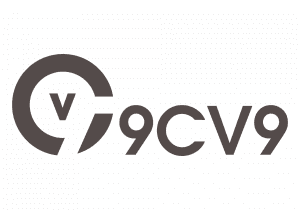









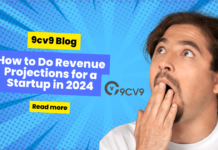
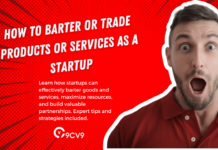



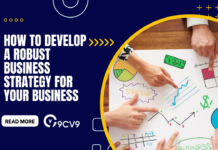
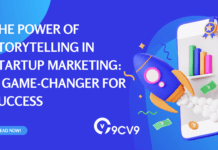
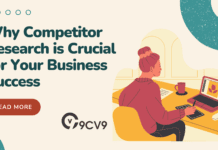
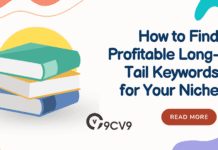



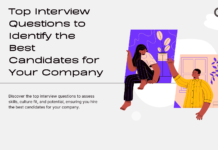
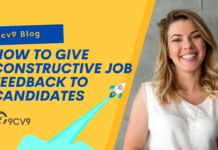
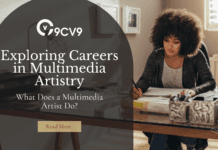
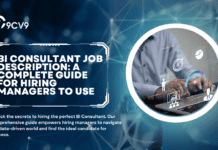





![Writing A Good CV [6 Tips To Improve Your CV] 6 Tips To Improve Your CV](https://blog.9cv9.com/wp-content/uploads/2020/06/2020-06-02-2-100x70.png)


